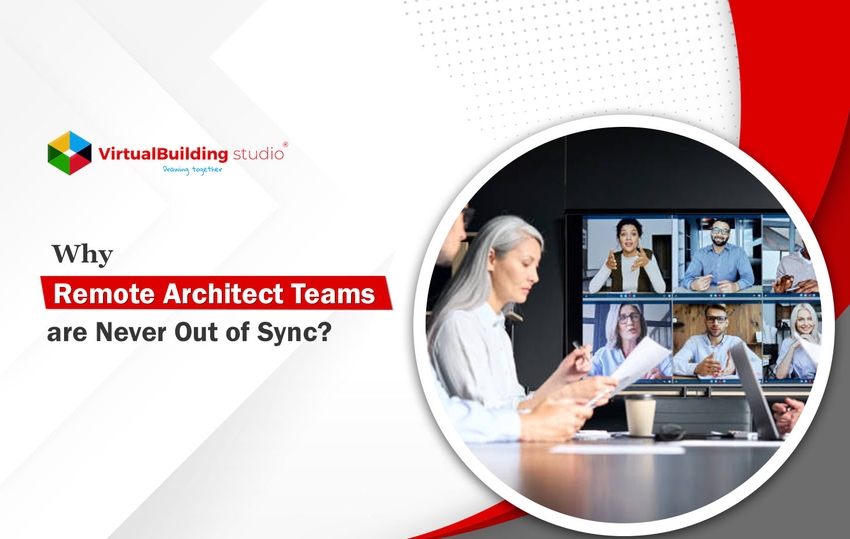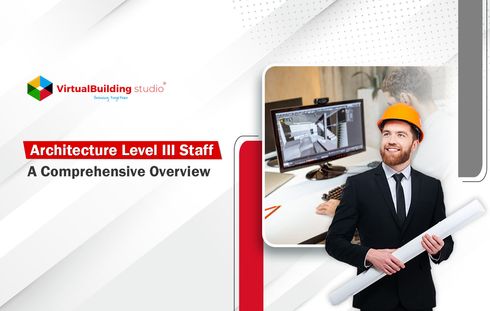
A subtle but significant revolution transforms the built environment in an era of self-interest and divisive political arguments over climate change. Beyond the political attention, architects, planners, and builders are reshaping how we design and develop our environments.
This continual evolution demonstrates the ability of architecture and design to produce considerable greenhouse gas reductions, improve social and community well-being, and address local, regional, and global concerns.
At the same time, these developments represent a larger trend in worldwide collaboration, particularly in architecture and engineering.
Global collaboration, once a rarity, is fast becoming the norm. As industries embrace cutting-edge tools like BIM (Building Information Modelling) and cloud-based design platforms, the demand for sustainable, context-sensitive practices is growing.
This article delves into the transformative potential of remote architect teams, highlighting how they achieve seamless operations and drive innovations. This isn’t merely about convenience—it’s about fostering environments where creativity and efficiency can thrive.
Remote Architects Teams: Deciphering the Skillset
Remote architect teams represent a significant shift in the architectural, engineering, and construction (AEC) business.
These teams comprise specialized professionals, who collaborate across borders and time zones to design and deliver high-quality projects.
These teams overcome geographical obstacles using advanced digital tools such as BIM, cloud platforms, and project management applications.
Remote teams contribute a diverse set of viewpoints and knowledge, ensuring that projects benefit from innovative thinking.
The capacity to tap into a large, geographically diversified talent pool also allows businesses to approach difficulties with confidence and flexibility.
In an industry where local knowledge and global trends cross, remote architect teams play an important role in bridging these gaps, resulting in better solutions for projects of any size or complexity.
Building Remote Architect Teams: Redefining Collaboration with Expertise
Remote Architect Teams redefine collaboration by integrating global talents, technologies, and adaptable strategies and focusing on key aspects of teamwork ensuring high-quality project outcomes with top-tier, US-trained talent proficient in building codes and design trends, delivering reliable results while addressing unique project challenges.
Remote architect teams capitalize on global access to talent by pairing specific expertise with the project requirements, embracing diverse perspectives for innovative solutions, and thriving on scalability and flexibility.
Remote architects enable team size adjustments to meet the project demands, reducing overhead costs without compromising on the quality.
This efficient, adaptable, and cost-effective approach positions remote architect teams as the frontrunners in transforming the AEC industry.
Collaborating with Remote Architects: Building a Cohesive Team Culture
A cohesive team culture involves fostering trust and camaraderie through virtual initiatives like meetups, interactive sessions, and informal check-ins creating meaningful connections and enhancing collaboration.
Establishing clear expectations and guidelines including workflows, deliverables, and communication standards ensures smooth and aligned execution of operations.
Encouraging regular feedback loops promotes continuous improvement and cultivates a proactive, and innovative workforce.
The team-building activities further enhance motivation and a sense of belongingness. Structured communication channels paired with transparency in roles and responsibilities strengthen relationships and improve overall teamwork.
By prioritizing these cultural aspects, remote architect teams maintain a robust foundation for success, despite physical distances.
Benefits of Remote Architect Teams: Unparalleled Advances
Remote architects bring a wealth of advantages to the table; including.
Global expertise
With diverse skills and knowledge, remote teams address challenges from unique perspectives.
Enhances efficiency
Collaborating across time zones speeds up the workflows and accelerates project timelines.
Innovation through diversity
Multinational teams inspire creative solutions combining different experiences and opinions.
Cost saving
Lower operational expenses allow firms to allocate budgets more effectively.
Scalable operations
Teams expand or contract as needed, aligning with the demands of projects without resource waste.
Moreover, these teams are at the forefront of sustainable practices integrating eco-friendly designs and adhering to global sustainability standards.
By fostering continuous learning and leveraging the latest technological advancements, remote architect teams offer unmatched innovation and cement their role as essential players in the AEC industry.
Remote Collaboration with the top 1% Talent: Dealing with US-based Projects
Proven Track record
The top 1% of talent includes the finest of architects and engineers from the global talent pool with extensive experience in delivering high-quality results across diverse projects including US-based work.
Innovation and Adaptability
Remote architects from the top 1% talent pool are equipped with the ability to tackle challenges with innovative and forward-thinking solutions.
Expertise and Elaborated skill set
For location-specific projects such as US-based, the remote architect team has in-depth knowledge of building codes, regulations, and design preferences for that particular area, enabling seamless execution of projects.
Expediting Growth with Successful Integration of Remote Architects
With an average onboarding time of 3 days and an average of 4 times efficiency increment, VBS orchestrates tailored collaboration with remote architects to expand the footprint of their clientele in the AEC industry.
One such successful integration story of remote architects is of Horizon- an architecture firm based in Nevada. Issues like moving around resources, projects with inconsistent quality, and unclear priorities were being faced by the company which led them to switch to DRM solutions by VBS.
Key Benefits of DRM to the Architectural firm
Met Project deadlines
The firm became consistent with project deadlines with the support of an efficient and committed remote architect team.
Reduced attrition rate
Partnering with VBS significantly contributed to a reduced attrition rate within the firm. A stable and consistent team of architects has fostered a positive work environment for the firm, promoting employee retention and work quality.
Available in PST time zone
The availability and flexibility of remote architects to work across PST time zones promote easy communication and swift problem-solving, resolving any kind of challenges.
Fit with culture
Remote architects seamlessly integrated with company culture, leading to effortless and fun collaborations that drove profound results for Horizon.
Conclusion
The transformation of the built environment through the remote architect teams is one of the most compelling responses to today’s climate and collaboration challenges, and by harnessing global expertise, advanced technologies, and the power of time zone alignment, these teams are pushing the boundaries of the possibility in the AEC industry.
The remote architects demonstrate how collaboration can transcend borders delivering superior results and sustainable solutions.
For firms aiming to stay competitive in an evolving market, embracing these professionals is no longer an option but a necessity.
As the industry continues to evolve, remote architect teams will undoubtedly play a pivotal role in shaping the future of architecture, engineering, and construction.




